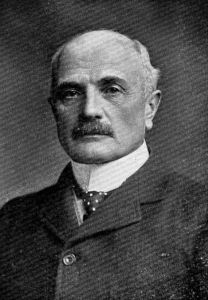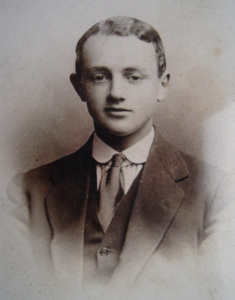The Wogan-Brownes, a Tragic Family
Published in the Kildare Nationalist, 10th February 2022
John Wogan Browne, the young British army officer who lost his life in tragic circumstances in Kildare Town on 10th February 1922, belonged to an old and historic Kildare family of Anglo-Norman stock. Throughout history they have had connections with many of the important events not only locally in County Kildare but also nationally and internationally.
They are descended from two prominent North Kildare families, the Wogans from Rathcoffey Castle and the Brownes from Castle Browne, now Clongowes Wood. In the period following the reformation both families remained Catholic and as a result suffered discrimination due to their religion. Following the Treaty of Limerick despite remaining active in Jacobite politics the two families managed to retain their estates but were unable to obtain army commissions in their native country. As a result male members who wished to engage in an army career were forced to obtain commissions in the various armies on the Continent.
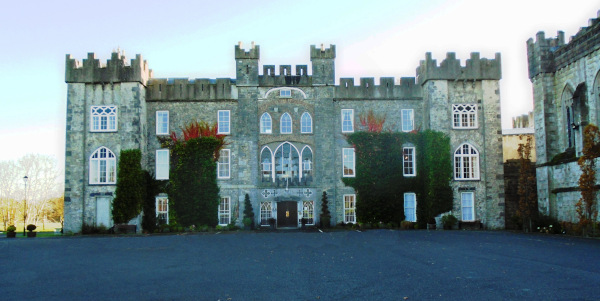
Castle Browne, now the Castle at Clongowes Wood College.
The Wogan and Browne families lived in neighbouring estates and in the early 1700’s were joined by marriage when Stephen Browne from Castle Browne married Judith Wogan from Rathcoffey. Subsequently, male members of the Brown family used the additional forename of Wogan until 1880 when by deed poll the double barrel name of Wogan-Browne was adopted.
Michael Wogan Browne, International Service
When the penal laws against Catholics were relaxed in the late 18th and early 19th century General Michael Wogan Browne was serving as a leading officer in the army of Saxony with the position of aide-de-camp to the King. In 1814–15 he represented Saxony at the Congress of Vienna which redrew the map of Europe following the end of the Napoleonic Wars. For his services he was created a Baron by the King of Saxony.
Previously in 1812, he inherited the family seat and estate of Castle Browne but as it was heavily encumbered, he sold the residence to the Jesuits who established a boys’ boarding school in the building renaming it Clongowes Wood. General Michael died in Dublin in 1824.
The ending of the penal laws allowed Catholics to become officers in the British army. General Michael’s eldest son, Thomas Wogan Browne, was the first family member to obtain a commission in the British army in 1819. His two brothers, Arthur and Francis both chose army careers in the Austrian service. The latter retired to France and his two sons Francis junior and Charles both chose their army careers in the British army eventually obtaining the ranks of Colonel and Major respectively. The following generation in the 20th century Colonel Francis’s two sons Frank and John, who was known to his family as Jack, continued the family military tradition and obtained commissions in the British army.
Francis Wogan-Browne
Colonel Francis was born in Tours, France in 1854 and enlisted in the 3rd Kings Own Hussars. He was commissioned in 1876 and by 1898 had obtained the rank of Lieutenant Colonel. During his army career he re-established his family residency in County Kildare. In 1879, while stationed at Portobello Barracks in Dublin he met and married Bede Costello whose father was the chairman of the National Bank. Shortly afterwards he was deployed with his regiment to Colchester where his eldest daughter Mary was born in September 1880. Most of his early years were spent in Farnham, Surrey close to Aldershot, where many of his children were born. There were also spells in the Curragh Camp where he served as Deputy Assistant Adjutant General from 1889 to 1892. During this period in 1890 one of his daughters Dorothea was born in the camp, the first Wogan Browne to be born in Kildare since the mid-1700’s.
Throughout most of his army career Colonel Francis resided in army camps. His first known residence in Ireland outside the camps was at No 2 McElwain Terrace, Newbridge. This terraced house was a modest dwelling which was used as a temporary residence when on army service in County Kildare. His property at the time was extensive, the family estate included 2,460 acres of freehold land situated in the Clongowes Wood area between Clane and Kilcock. He vacated his residence in Newbridge in May 1895 when he left for service in England.
Boer War Connection
Both Francis and his eldest son Frank participated in the Boer War in South Africa. From November 1901 his regiment, the 3rd Hussars, participated in anti-guerrilla operations. In the early autumn of 1902, both father and son returned home from South Africa but it was not to be a happy occasion as a tragic family event occurred shortly afterwards. Frank, a lieutenant in the Scottish Rifles, who was only 20 died in a drowning accident in Greystones on the 4th of October 1902. This was the second untimely death in the family, Henry the second eldest boy in the family having died with typhoid at the age of three in 1886. Colonel Francis at a relatively young age of 52 retired from the army and declined an offer of the post of British military attach&eacuote; in Paris as he wished to settle down and live in Kildare. The family moved into a rented house at Craddockstown close to Naas and the colonel involved himself in local affairs including taking on the role of a magistrate. The extent of his connection and friendship to local gentry families was evident in July 1905, on the occasion of the marriage of his daughter Mary to Major Alfred Maitland-Addison. The invitation list and lists of individuals who gave wedding presents was like a who’s who of the leading gentry families in County Kildare at the time.
Establishing Keredern as a New Family Seat
Within a few years Colonel Francis established more permanent roots. Since the sale of Castle Browne the family had no recognised family seat and in 1906 he built a new residence on land purchased from the De Burgh family in Oldtown, Naas. He named the new house Keredern after his mother’s family. Her name was Charlotte Denis de Keredern de Trobriand, who was a member of a well-known titled French family.
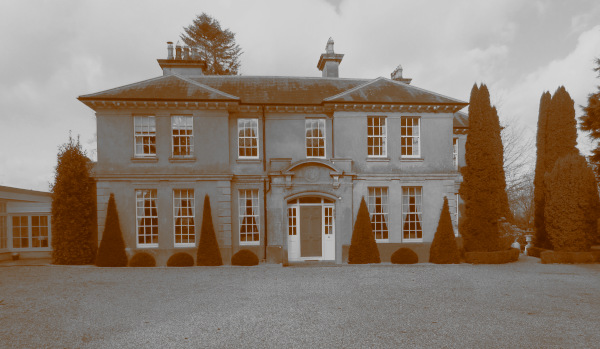
Keredern, Naas.
Within a short time of the family moving into their new house another untimely death occurred. The colonel’s 20-year-old-daughter Dorothea who was well-known in amateur drama circles in Naas was diagnosed with tuberculosis and although she moved to a residence close to the sea at Greystones to assist in her recovery, she died in August 1910.
Two years later, there was another untimely death. In September 1912 the colonel’s brother Charles, a major in the Royal Irish Regiment was drowned with two companions in a sailing accident close to Brest in Britany. He was married in 1896 to Vera Boyse, a member of a Wexford military family.
First World War Connection
The Great War also had a serious impact on the family. In 1913 Judith, the colonel’s second eldest daughter, married Edward Hain the heir to a British Steamship company. At the outbreak of the war, Hain volunteered for duty but was killed in action in Gallipoli in October 1915.
Colonel Francis had inherited the title of Baron first conferred on his grandfather by the King of Saxony but on the outbreak of the war he dropped the title due to its German origin. Re-enlisting in the army he was posted to Gibraltar where he served as Assistant Adjutant & Quartermaster General between 1915–6. While abroad in July 1915, his youngest daughter Claire married Francis Lillis, a member of banking family from Cork. In the absence of her father she was given away by her brother John who was serving as a 2nd Lieutenant in the Royal Field Artillery. Shortly afterwards, John was deployed to the Balkan Front and saw active service in the Salonika campaign.
By April 1919, with the Great War over the family were reunited but the following year another family bereavement occurred with the passing of the Colonel’s wife Beda in June 1920. At the time she was convalescing in a house close to the sea in Adelaide Street, Dun Laoghaire.
While the War of Independence did not seriously affect the family, both Unionist and Nationalist families in the Naas and Curragh triangle largely escaped the worst effects of the militancy during the period. John continued his army career with the RFA and was stationed in Kildare Town where the regiment were based. There were personal reasons for continuing his army career in Ireland. He had developed a romantic relationship with Mona Robertson from Malahide and by March 1921 the happy couple were engaged. At this stage there were no hints of the forthcoming tragedy to befall the family.
Death of John Wogan-Browne
Details of the tragic death of John Wogan-Browne in February 1922 is probably the most written about fatality during the Irish Revolution in County Kildare. His death in an armed robbery of the regimental pay at hands of IRA members apparently acting without sanction is well-known.
While the carnage and horrors of revolution are widely covered in history publications, the personal anguish of family members is seldom given. The reaction of John’s sister Claire was witnessed by her two children, five-year-old Barry and three-year-old Mary who were in a nursery looked after by a Nanny. Over 80 years later her daughter Mary Lillis-Jensen recalled the event:
The door of the nursery opened to admit my mother, her face red and swollen with tears. ‘I have terrible news Nanny’, she said, ‘my brother has been shot, murdered by the IRA.’ Her voice wobbled and shook, and tears streamed down her face.
The children were stunned; they had no idea that grown-ups ever cried.
Unsurprisingly, Colonel Francis never recovered from the death of his sole surviving son. His family plans and dreams were shattered, he was now living alone in Keredern. Shortly afterwards he sold the house and moved from Ireland. By August 1922 his address was Cromwell Terrace, London. His last reported visit to Ireland was in March 1926, when he accompanied his daughter Claire to a meeting of Leopardstown Races. He died the following year while on a tour in France.
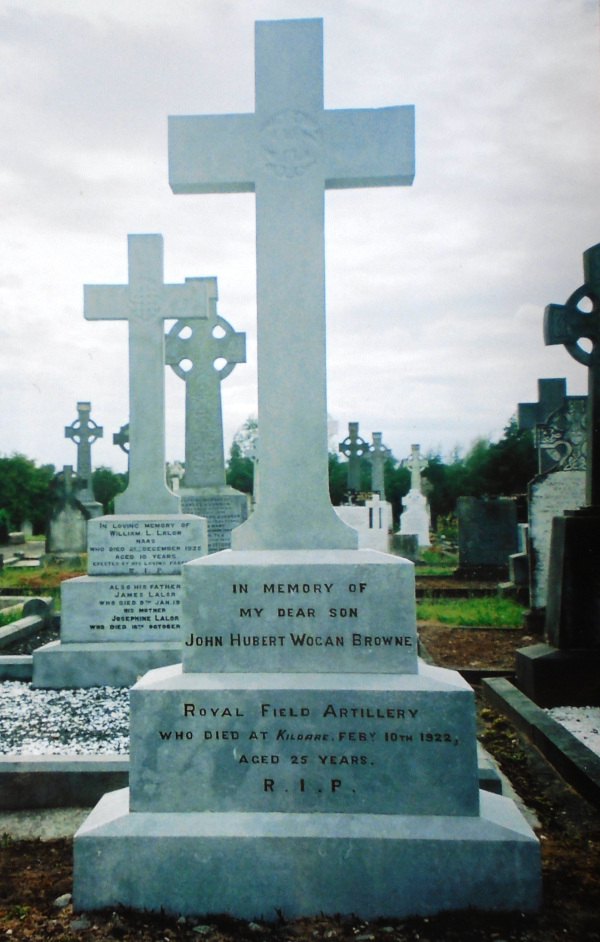
Wogan-Browne gravestone, St. Corbans Cemetery, Naas.
John and Mona Robertson
Details of John’s private life was unknown at the time of his death. His last will and testament which was made during the intense period of the War of Independence in March 1921 reveals the strong bond that he had developed with his sweetheart Mona Robertson. She resided in Malahide with her widowed Mother and was the eldest in the family. The following are the details of John’s will:
In the event of my death, I give £350 of my savings to my darling girl, my fiancée Mona Mary Robertson, 8 St James Terrace, Malahide, Co Dublin. I also wish her to have my gold matchbox as a memento. The remainder of my invested money I give to my nephews and nieces and such as remains of my property I wish to be disposed of as my dear father deems fit.
One of the wreaths placed on John’s grave at his funeral was from the Robertson family, the inscription read—With deepest sympathy from Mrs James Robertson and family.
Eight years after the tragic death of her fiancé Mona married Arthur Julian Kennedy, a captain in the Royal Engineers whose father was a retired senior army officer living in Malahide. The wedding was held quietly at Holyhead in Wales on the 6th August 1930 and the couple afterwards resided in Chepstow, South Wales. Mona, however, did not enjoy a long lifespan. She died at the age of 33 in October 1935 and was interned in the Robertson family plot in Malahide Churchyard.
John Wogan-Browne continued to be remembered in Kildare. In 1925 a memorial Mass was celebrated in Kildare Parish Church. The Brownstown Branch of the British Legion formed up at Kildare Railway Station and marched to the church accompanied by the Kildare pipers band. A wreath was placed on the wall where he died by some of his friends bearing the inscription ‘Lest We Forget’.
Lieutenant Wogan-Browne was the only British soldier to die violently in County Kildare as a result of the Irish Revolution, 1912–23, and ironically he regarded himself as a native of the county. While the British army were targets during the War of Independence, he died during a white flag period of truce, when the army were evacuating their barracks in a negotiated and orderly method during which firearms were not provocatively carried.
His death saw the extinction of a Kildare family that had an involvement in almost every period in Irish and European history since the Norman period. Wogan-Browne ancestors participated in at least three rebellions in Ireland against the English Crown, in 1580, 1641 and 1689 and two in Britain in 1715 and 1746. Illustrious ancestors include, Sir John Wogan a Justiciar of Ireland from the 13th century and also William Wogan from Rathcoffey Castle who was executed in 1581 for his role in the Baltinglass Rebellion. He was subsequently granted martyr status and later beatified by Pope John Paul II.
Despite the passage of one hundred years, the sense of shame felt in County Kildare as a result of the killing of John Wogan-Browne is as great today as it was in 1922.
Sources
- General Register Office
- Kildare Observer, 11 May 1895; 3 Sept. 1910; 16 April 1927
- Bernard Burke, Landed Gentry of Ireland, 1899
- Matthew Devitt, ‘Rathcoffey’ in JKAS, Vol III (1899–1902), pp 79–86
- Freemans Journal, 6 Oct. 1902
- Irish Times, 22 July 1905; 27 Sept. 1912; 14 Nov. 1925; 27 March 1926; 28 May 1930; 1 Jan. 1938; 4 March 1955
- Will of John Hubert Wogan-Browne, 8-8-1922 (NAI, PO 4/204/18)
- Officers service papers, Lt. John Wogan-Browne, 1914–1923 (TNA, WO 339/43238)
- Thom’s Irish Who’s Who, 1923
- Irish Independent, 14 April 1927; 19 February 1954
- Con Costello; Kildare Saints, Soldiers and Horses (Naas, 1991), pp 91–4
- Mary Lillis-Jensen, I just happened to be there: a memoir of peace, love and war 1920–1941 (London, 2004), pp 7–11
- James Durney, The Civil War in Kildare (Cork, 2011), pp 37–43
- Seamus Cullen, Kildare: The Irish Revolution, 1912–23 (Dublin 2020), pp 13, 24, 105–6
- Mark McLoughlin, Wilful Murder: Lt. John Hubert Wogan-Browne, Kildare 10 February 1922 (Naas, 2022)
- Detail, Mona Robertson Kennedy gravestone, Malahide
- holyirishmartyrs.com/the-41-martyrs (accessed Jan. 2022)

